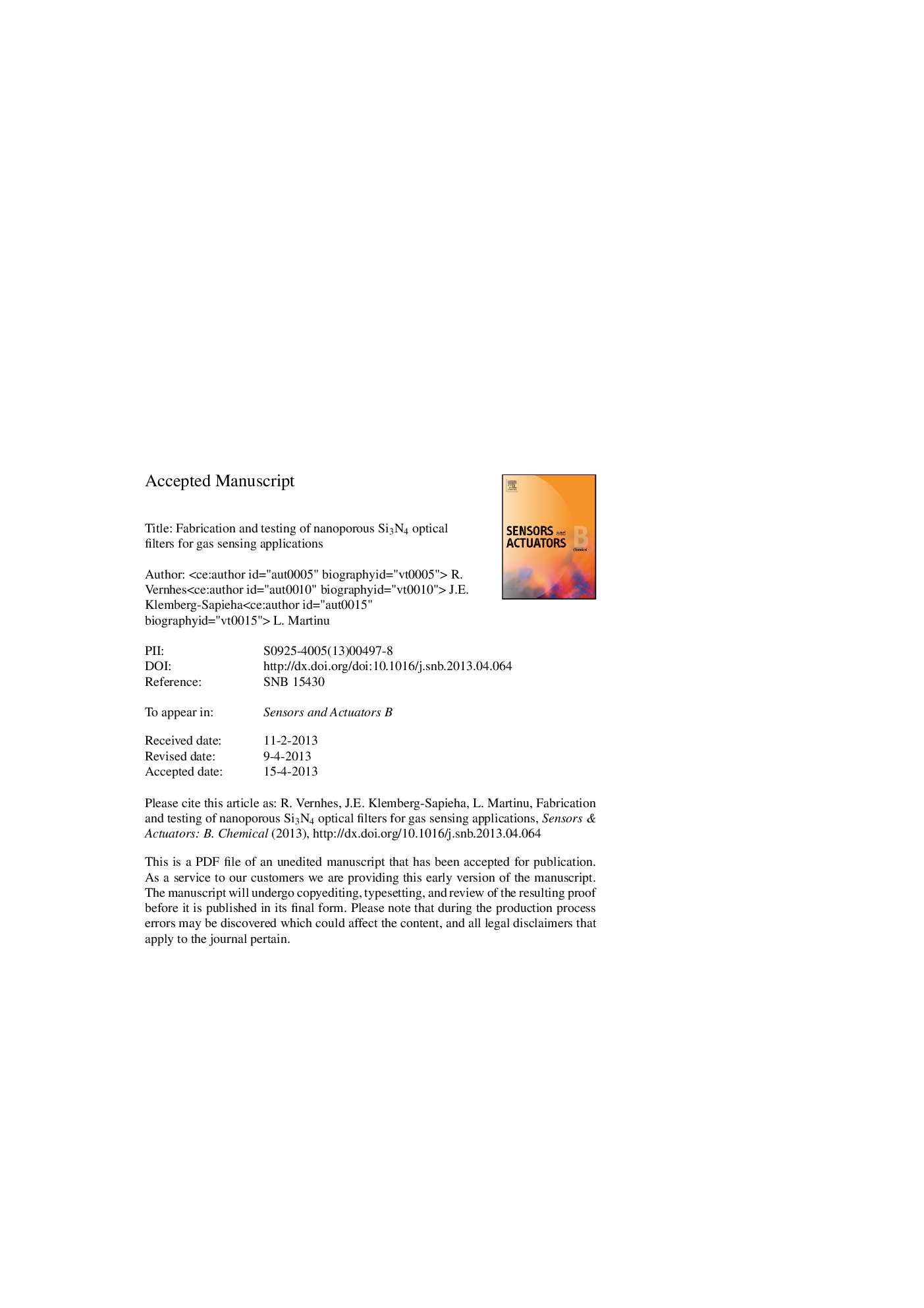| Article ID | Journal | Published Year | Pages | File Type |
|---|---|---|---|---|
| 7148872 | Sensors and Actuators B: Chemical | 2013 | 30 Pages |
Abstract
We demonstrate the concept of nanoporous multilayer optical filters as optical gas sensors, based on plasma-enhanced chemical vapor deposited Si3N4 films with controlled porosity. In situ real-time spectroscopic ellipsometry, associated with the Bruggeman effective medium approximation is employed for characterizing the film microstructure, particularly the total volume fraction of porosity (fv), and the fraction of open porosity (fo). In order to do so, the effective refractive index (neff) of the as-grown films is evaluated both in vacuo and when exposed to ethanol vapor. We find that fv=34% and fo = 27% for porous films, while fv=13% and fo = 2% for dense films. Additionally, adsorption isotherms of ethanol are performed and the resulting curves are interpreted using the Kelvin equation as well as the Dubinin-Radushkevich model, allowing us to estimate the average micropore size (L â 2 nm) and the micropore/mesopore volumes (46%/54% of fo). Infrared ellipsometry is then applied for the characterization of the film chemical structure and, particularly, for the study of heat treatment-induced chemical stabilization. Finally, porous/dense Si3N4 quarterwave stacks are implemented in a Fabry-Perot filter that is tested as a prototype sensor in a simple configuration. We observe high sensitivity to model vapors such as ethanol (10 ppm) and ammonia (28 ppm), as well as fast response times (â10 s), good reproducibility, and complete signal regeneration after heat treatment.
Keywords
Related Topics
Physical Sciences and Engineering
Chemistry
Analytical Chemistry
Authors
R. Vernhes, J.E. Klemberg-Sapieha, L. Martinu,
